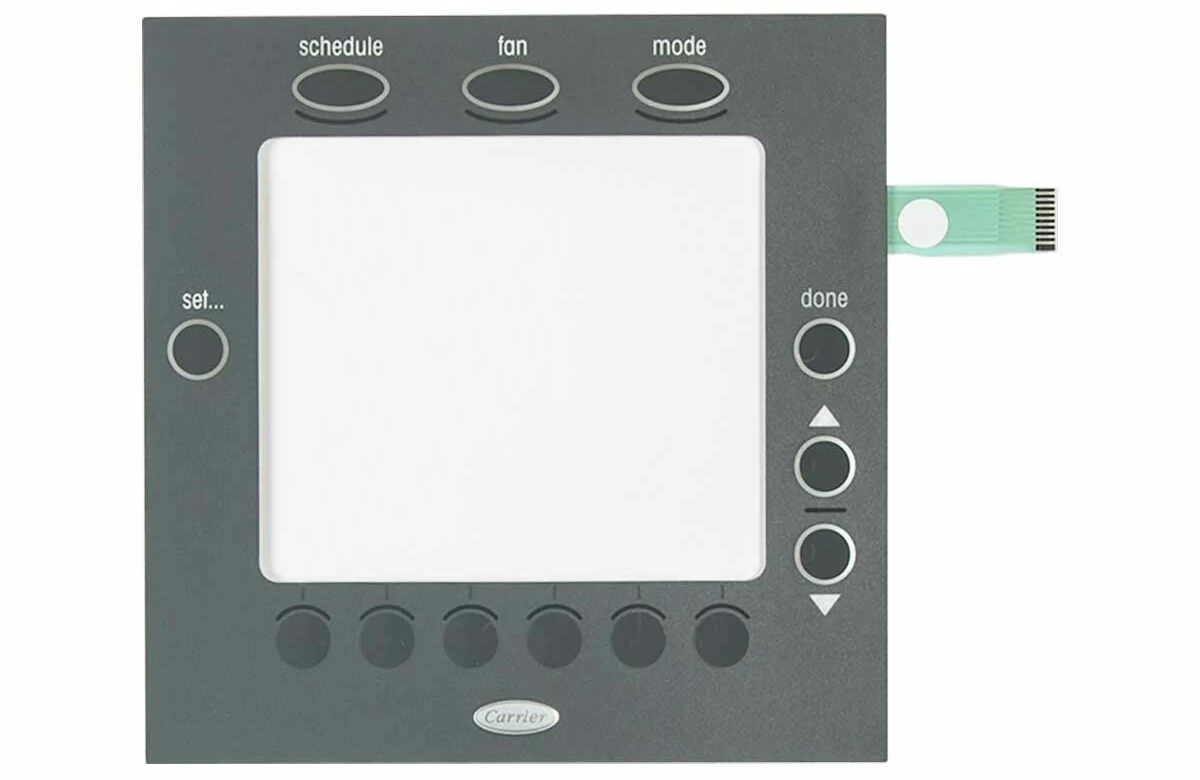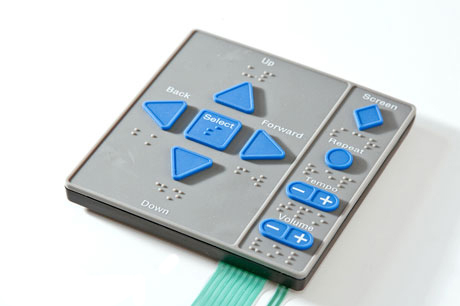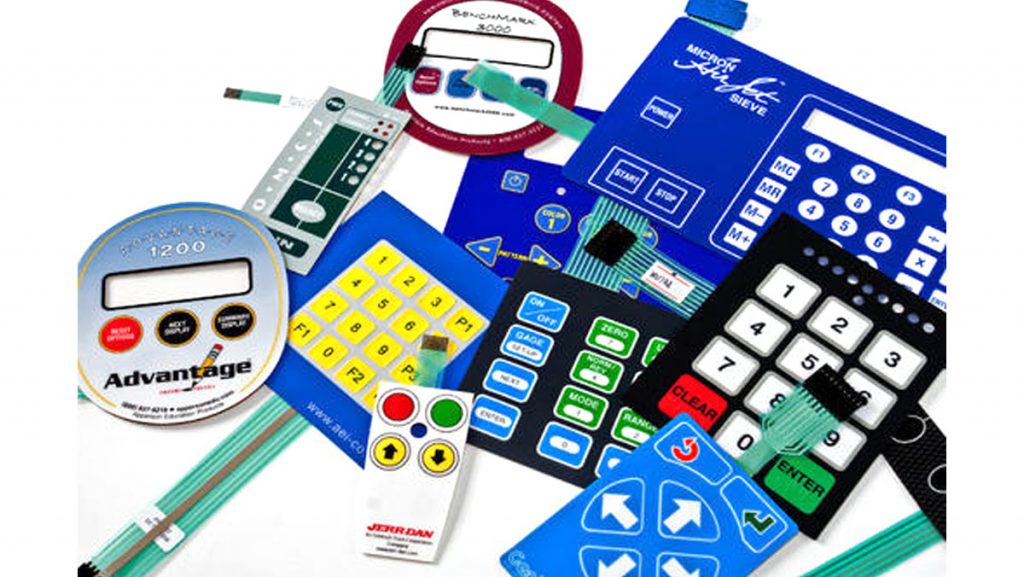Understanding the Technology Behind Membrane Switches
Wiki Article
Comprehending the Importance of Membrane Switches in Interface
Membrane buttons are essential components in the layout of reliable customer interfaces, helping with not just performance but additionally enhancing visual charm and user communication. Their one-of-a-kind functions, such as resistance to customizable layouts and ecological elements, make them ideal for a diverse variety of applications throughout several sectors. As we check out the future fads and various benefits connected with Membrane modern technology, it comes to be clear that these switches are greater than just parts; they stand for a merging of innovation and functionality. The ramifications of this innovation on customer experience are worth examining better.What Are Membrane Buttons?

The spacer layer, which contains adhesive residential properties, permits for the splitting up of the circuit layer from the overlay, making sure that the switch stays in a non-activated state up until pressed. When pressure is related to the overlay, it compresses the spacer layer, bridging the space and completing the circuit in the underlying layer. This style not just lowers the physical space needed for conventional mechanical switches but likewise enhances the sturdiness of the device, as Membrane switches are usually immune to dust, moisture, and various other environmental aspects.
Commonly discovered in applications ranging from customer electronic devices to medical devices, Membrane buttons are essential to modern technology, giving a user-friendly and efficient interface that straightens with modern design demands.
Advantages of Membrane Buttons
While many switch innovations exist, Membrane Switches offer distinct benefits that make them particularly desirable in various applications. One of the key advantages of Membrane buttons is their small layout, which allows for space-saving executions in devices where genuine estate is limited. Their slim profile not only enhances aesthetic charm but likewise promotes lightweight building and construction.An additional significant advantage is their resistance to ecological elements. Membrane switches are generally sealed against dampness, dust, and contaminants, making them suitable for usage sought after settings, such as medical gadgets and commercial equipment. This sturdiness expands the life expectancy of the button, lowering upkeep costs and improving reliability.
Furthermore, Membrane buttons can be customized to fulfill certain style demands, incorporating distinct graphics and shades that enhance customer communication. Their responsive comments options can likewise be tailored to offer a gratifying customer experience. Furthermore, Membrane switches are cost-effective, especially in high-volume applications, as they can be created efficiently.
Applications in Numerous Industries

In the consumer electronic devices field, Membrane switches are common in tools such as microwaves, cleaning devices, and remote controls. Their tactile feedback and aesthetic choices boost user experience while giving a sleek, modern-day appearance. Furthermore, vehicle suppliers utilize Membrane buttons in dashboard controls and infotainment systems, where space is restricted, and individual involvement is crucial.
Moreover, the commercial sector leverages Membrane buttons in control panels for equipment and devices, enabling instinctive procedure in usually rough settings. Their resistance to chemicals and wetness ensures longevity and dependability in these applications. Overall, the flexibility of Membrane Switches contributes substantially to their prevalent use, making them essential in different technical domains.
Design Factors To Consider for Membrane Switches

When designing Membrane switches, a number of vital considerations should be taken into account to make sure optimum functionality and individual experience. To start with, the selection of materials is crucial; picking sturdy, top quality substratums can boost the switch's long life and resistance to environmental variables such as wetness and temperature level fluctuations.
Secondly, the design of the graphic overlay must focus on quality and ease of use. Icons and text have to be legible, and the format ought to help with user-friendly communication (membrane switches). Furthermore, tactile responses is essential; incorporating a responsive dome or various other devices can improve the user experience by supplying physical verification of activation
Another important factor is the switch's electric efficiency. Developers should ensure that the conductive traces are correctly developed to lessen resistance and avoid signal disturbance. This involves evaluating the needed actuation pressure and guaranteeing compatibility with the electronic elements they will user interface with.

Future Fads in Membrane Technology
As technology remains to advance, Membrane switches blog here are poised to progress significantly, driven by developments in materials and producing strategies. One arising pattern is the unification of sophisticated products, such as versatile substrates and conductive inks, which boost sturdiness and minimize the general weight of Membrane buttons. These products not just improve the tactile response but additionally permit for the design of buttons that can withstand harsher environmental conditions.Furthermore, the assimilation of touch-sensitive modern technologies is transforming conventional Membrane Switches right into even more interactive interface. Capacitive touch sensing units embedded within Membrane switch panels can give an extra user-friendly and responsive customer experience, straightening with the growing need for sleek, contemporary styles in consumer electronics.
Additionally, improvements in printing methods, such as digital and 3D printing, allow fast prototyping and personalization of Membrane switches. This versatility allows producers to react a lot more swiftly to market needs and consumer preferences.
Lastly, sustainability is becoming a significant emphasis, with producers checking out green materials and procedures. As these trends unravel, the future of Membrane technology assures enhanced functionality, aesthetic allure, and environmental responsibility, solidifying their duty in innovative interface throughout different industries.
Final Thought
In conclusion, Membrane Switches represent an essential component in the design of user interfaces, integrating functionality with visual adaptability. As advancements in modern technology proceed, the advancement of Membrane switches is expected to more improve user interfaces, driving advancement and improving functionality in a progressively intricate technological landscape.Membrane buttons are indispensable i thought about this components in the layout of effective user interfaces, facilitating not only capability yet additionally boosting aesthetic charm and user communication.Membrane Switches offer as a vital element in different customer interfaces, facilitating a seamless interaction between individuals and digital tools.While numerous switch innovations exist, Membrane Switches offer unique benefits that make them specifically preferable in numerous applications.Moreover, Membrane buttons can be tailored to meet certain style needs, including one-of-a-kind graphics and shades that boost user communication.In conclusion, Membrane Switches stand for an essential part in the layout of customer interfaces, incorporating capability with visual versatility.
Report this wiki page